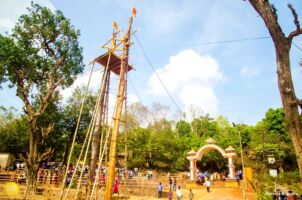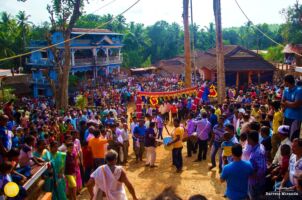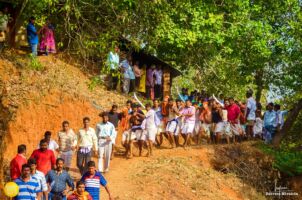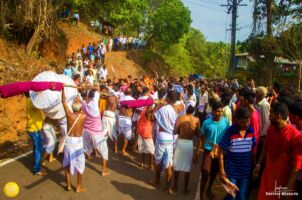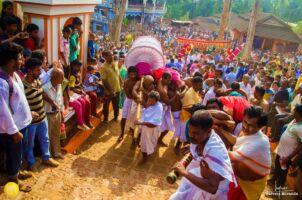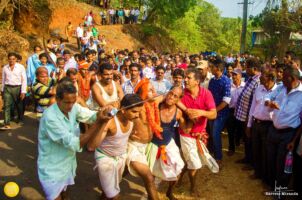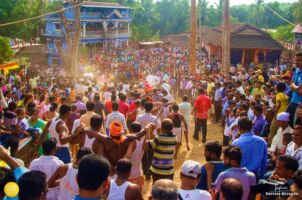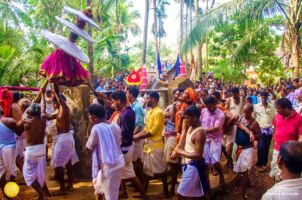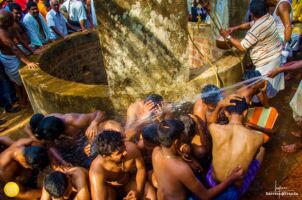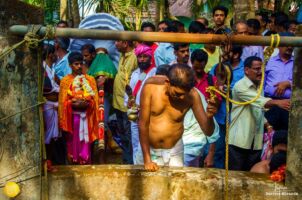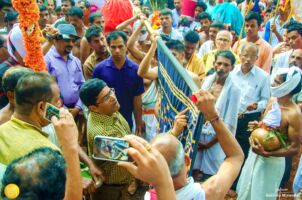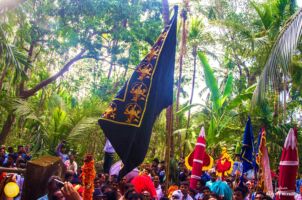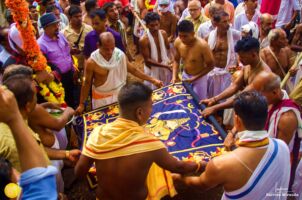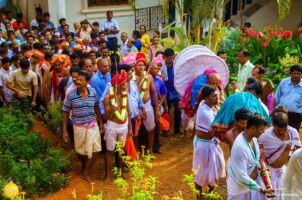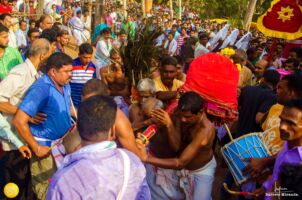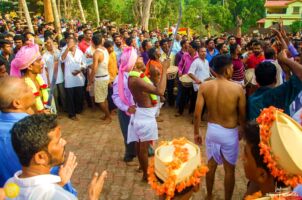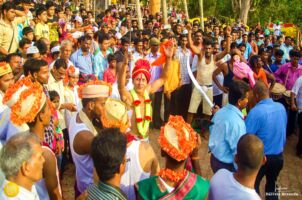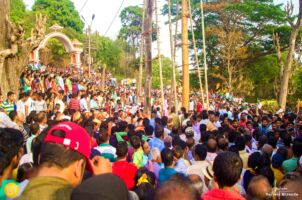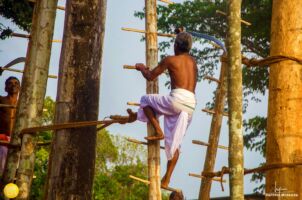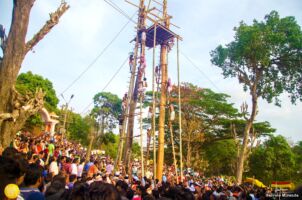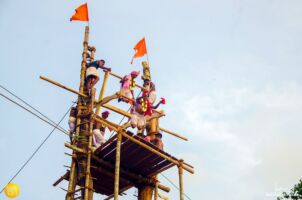Gadyaanchi Jatra of Poinguinim
The festival of Gadyaanchi Jatra, which happens once in three years at Poinguinim, a village in Canacona is celebrated in the name of Shri Betal who is the most feared and highly revered deity of Poinguinim and its neighbourhood.
The first year (of the third year) a ritual called ‘Jevnni’ is performed. The second year the famous ‘Ttakaa’ procession is carried out and the third year the Gadyaanchi Jatra is celebrated. The ‘Ttakaa’ procession is believed to be an invitation to all the deities of the three villages of Poinguinim, Lolye and Kharegaall. The procession is lead by a representative of the deity Betal, followed by four men called ‘Gade’, with two ‘Tarangaa’, and two ‘Satris’ (umbrella shaped icons representing the deities).
The ‘Ttakaa’ is a cloth inscription with three lines embroidered on the top with images of Shri Betal in the centre and different deities at the sides. Below him is seen the emblem of the Kadamb dynasty; lion with a raised paw. The ‘Ttakaa’ lines praise the deity Shri Betal, who is believed to have conquered 12 kingdoms in Goa. The folklore says that in the 13th century, Shri Betal conquered Poinguinim and annexed it to his 12 other kingdoms. The villagers requested him to reside peacefully in Poinguinim in return for which he was promised a Jatra after every three years. Since then the famous Gadyaanchi Jatra is being celebrated.
The two ‘Tarangaa’, the ‘Satri’ and the ‘Pillkucho’ (bunch of peacock’s feathers) are brought ceremoniously to Poinguinim from Amona near Khotigao prior to the Jatra. Two massive tree trunks called ‘Khaamb’ – around 13-14 meters high – are erected in front of the Shri Betal temple. A huge wooden spindle called the ‘Raat’ with four arms is mounted on these ‘Khaamb’.
In the evening a metal hook is pierced into the back muscles of the four ‘Gade’. The ‘Gade’ climb the ‘Khaamb’ wearing a turban and a dhoti. They hold a sword in the right hand and a piece of cloth in the other. Each “Gado” (singular of Gade) is tied to the arm of the spindle. The spindle is then rotated. The “Mhaal Gado” (Chief) then poses four questions to the crowd below. “Lolyekaar Aayle?”- Have the villagers from Lolye arrived? “Poinginkaar Aayle?” – Have the villagers from Poinguinim arrived? “Khargaallkaar Aayle?”- Have the villagers from Kharegaall arrived? Khushi Jaali? – Are you all happy? After receiving a loud positive response the spindle is rotated and stopped, thus marking the end of the Jatra. On the Jatra day the image of Shri Betal in the temple is decorated in a very traditional way. He is shown wearing a white dhoti and a red chequered saree covered on his head. This combination of decoration has remained unchanged for many years.
The Jatra and the ‘Ttakaa’ procession seems to be a victory march carried out to commemorate the triumph over Poinguinim after a battle lead by four warriors. This was subsequently given a mythical touch. Folklores of local army units established to protect the village boundaries are still told by the village elders in other parts of Goa. A similar festival was also celebrated at Kundai in Ponda which was banned by a Declaration of December 6, 1844.
by Rohit R Phalgaonkar
Photos by Lynn Barreto Miranda / lynn.barretomiranda.com

Scan the code for directions.

website designed by bmwebstudio
goa / ph: 9822151419


